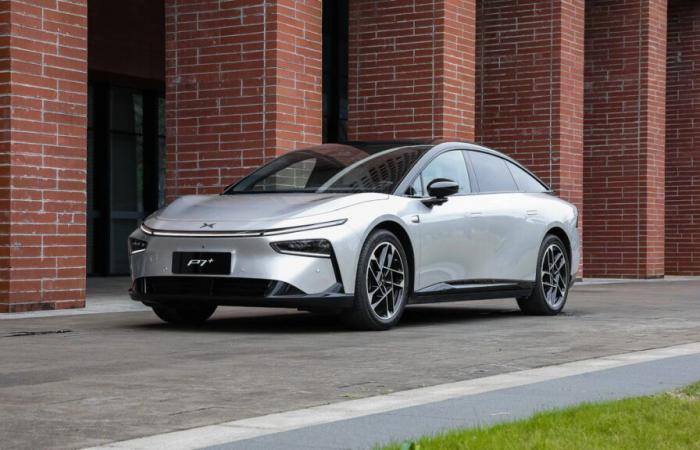
XPENG revolutionizes the autonomy of electric cars with its Kunpeng system. Combining an electric motor and a gasoline range extender, it promises up to 1,400 km of travel without recharging, thus responding to fears linked to the still limited infrastructure.
Add a gasoline generator to electric
Range anxiety, a major obstacle to the mass adoption of electric vehicles, could soon be a thing of the past. The Chinese manufacturer XPENG,
during its recent AI Day
has lifted the veil on a daring technology: the Kunpeng system, a hybrid solution combining an electric motor with a gasoline range extender, promising up to 1,400 km of autonomy. An approach which could be the solution to convince those undecided about electrification.
XPENG, already known for its 100% electric models like the G6 and G9, is making a strategic shift by integrating EREV (Extended-Range Electric Vehicle) technology into its offering. Unlike plug-in hybrid vehicles where the combustion engine can directly drive the wheels, the Kunpeng system uses a gasoline generator only to recharge the battery, thereby powering the electric motor. A philosophy similar to that adopted by Mazda with its MX-30 e-Skyactiv R-EV.
This technological choice responds to a crucial problem: charging infrastructure, which is still insufficient in many regions of the world. By offering a combined range of 1,400 km, including 430 km in 100% electric mode, XPENG aims to reassure the most skeptical drivers, while offering a predominantly electric driving experience on a daily basis. The transition between the two operating modes, managed by artificial intelligence, is intended to be transparent for the user.
At the heart of the Kunpeng system is an 800V architecture based on silicon carbide, guaranteeing efficiency and reliability. Coupled with a “5C ultra-charging AI” battery and a coaxial electric motor also made of silicon carbide, this platform allows ultra-fast recharging. XPENG announces that it can recover 1 km of autonomy per second on its new S5 terminals, and reach 80% charge in just 12 minutes. In addition, an intelligent system called “AI Battery Doctor” constantly monitors the condition of the battery, optimizing its lifespan and promising 30% increased longevity.
XPENG has not disclosed details regarding the heat engine used as a generator, nor the battery supplier. However, the announced autonomy of 430 km in electric mode brings the Kunpeng system closer to the recent battery pack presented by CATL, initially designed for rechargeable hybrids, as specified by our colleagues at
Frandroid
. It is therefore plausible that XPENG has adapted this technology to its EREV system. The manufacturer also emphasizes the low noise level of the gasoline generator, keen to preserve the acoustic comfort specific to electric vehicles.
The miracle solution in Europe? Yes and no
This strategic shift comes in a context of slowdown in the electric vehicle market in Europe. Faced with competition from traditional manufacturers and the rise of new Chinese players, XPENG, like its compatriot BYD, seems to be adapting its offering to appeal to a wider audience. Plug-in hybridization, or in this case EREV, appears to be a transitional solution making it possible to address the current limitations of charging infrastructures.
However, the arrival of the Kunpeng system in Europe could face regulatory obstacles. EREV vehicles, although closer to electric vehicles than classic plug-in hybrids, are subject to the same customs duties as 100% electric models imported from China. A potential obstacle to the commercialization of this technology on the Old Continent.
It remains to be seen whether XPENG will adapt its strategy to circumvent these obstacles. The future will tell if the Kunpeng system, with its 1,400 km of autonomy and its ultra-fast charging, will succeed in convincing European motorists and imposing a new standard on the electric mobility market. The innovation is there, but the challenges remain numerous. The Chinese manufacturer, with its expertise in artificial intelligence and its desire to innovate, in any case seems ready to play a major role in the energy transition of the automobile sector.





